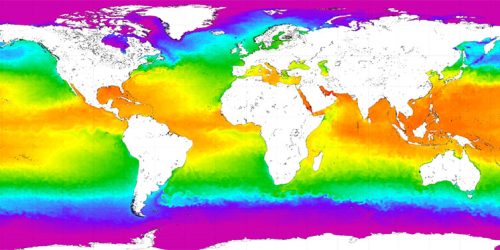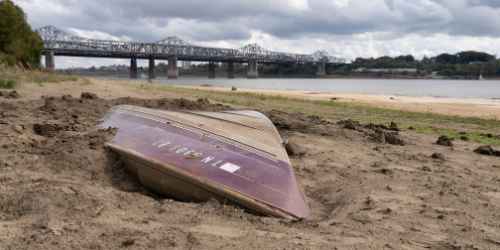In oceanography, a front is a boundary between two water masses moving in different directions. Satellite observations and realistic computer simulations have alerted scientists to active ocean surface fronts called submesoscale fronts, which are approximately 20-km wide. These submesoscale fronts are characterized as having large vertical velocities, which encourage the mixing and transfer of momentum energy, nutrients, and carbon between the ocean surface and the ocean interior. In particular, previous studies have found that both observations and model simulations indicate that these fronts — especially in the northwest Pacific upper ocean — contribute significantly to vertical exchanges of energy and nutrients. Correspondingly, researchers funded in part by CPO’s Climate Variability & Predictability (CVP) program used satellite observations and high-resolution simulation to investigate the dynamical processes and generation of submesoscale fronts and their impact on vertical exchanges in the subtropical counter-current (STCC) system of the northwest Pacific Ocean. Understanding the dynamical processes and generation mechanisms of these fronts is key to understanding how energy and nutrients are exchanged in the STCC system. This understanding, in turn, then leads to further insights regarding the significance of the submesoscale fronts to regional carbon and energy budgets. The researchers, who published their findings in the Journal of Physical Oceanography, found that the properties of the submesoscale fronts substantially increased the vertical exchanges in the STCC upper ocean. Further, the processes they highlight provide additional evidence for why there is often increased chlorophyll concentrations from phytoplankton blooms at the periphery of large-scale ocean eddies, or circular currents of water.
Revealing the Dynamical Processes of Large-Scale Ocean Fronts











